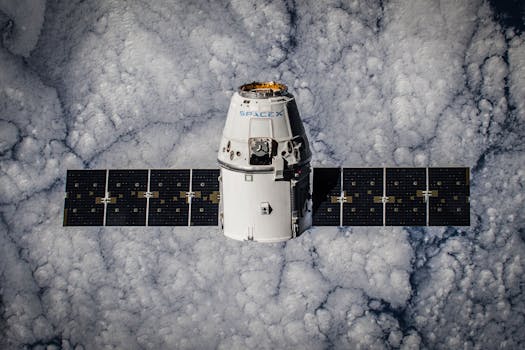GEO Satellites: Understanding the Technology and Applications of Geostationary Orbit Satellites
GEO satellites are a type of satellite that orbits the Earth at an altitude of approximately 36,000 kilometers, remaining stationary relative to a fixed point on the equator. This article delves into the technology and applications of GEO satellites, exploring their history, benefits, and future developments.

GEO Satellites: Understanding the Technology and Applications of Geostationary Orbit Satellites
GEO satellites, or Geostationary Orbit satellites, are a type of satellite that orbits the Earth at an altitude of approximately 36,000 kilometers, remaining stationary relative to a fixed point on the equator. This unique characteristic allows GEO satellites to continuously observe and communicate with a specific region of the Earth, making them essential for various applications such as telecommunications, weather forecasting, and navigation.
The concept of GEO satellites was first proposed by scientist Arthur C. Clarke in 1945, and the first GEO satellite, Syncom 2, was launched in 1963. Since then, hundreds of GEO satellites have been launched, providing a wide range of services including television broadcasting, internet connectivity, and mobile communications. The use of GEO satellites has revolutionized the way we communicate, access information, and navigate our surroundings.
How GEO Satellites Work
GEO satellites work by orbiting the Earth at a speed that matches the rotation of the planet, allowing them to remain stationary relative to a fixed point on the equator. This is achieved by placing the satellite in a geostationary orbit, which is approximately 36,000 kilometers above the equator. At this altitude, the satellite’s orbital period matches the Earth’s rotational period, allowing it to remain stationary relative to a fixed point on the equator.
GEO satellites use a combination of solar panels and batteries to generate power, and they are equipped with transponders that receive and transmit signals to and from Earth. The signals are transmitted to the satellite through a large antenna, and the satellite then retransmits the signals back to Earth, allowing for continuous communication and data transfer.
Applications of GEO Satellites
GEO satellites have a wide range of applications, including telecommunications, weather forecasting, navigation, and Earth observation. They are used to provide television broadcasting, internet connectivity, and mobile communications to remote and underserved areas. GEO satellites are also used for weather forecasting, providing images of clouds, storms, and other weather systems that help meteorologists predict weather patterns.
In addition to these applications, GEO satellites are also used for navigation, providing location information and timing signals to GPS receivers on the ground. They are also used for Earth observation, providing images of the Earth’s surface that help scientists study climate change, deforestation, and other environmental phenomena.
Future Developments and Challenges
The use of GEO satellites is expected to continue growing in the coming years, with new technologies and applications being developed. One of the major challenges facing the GEO satellite industry is the increasing amount of space debris in geostationary orbit, which poses a risk to operational satellites. To address this challenge, satellite operators and manufacturers are developing new technologies and strategies for removing debris from orbit and preventing collisions.
Another challenge facing the GEO satellite industry is the increasing demand for spectrum and bandwidth. As the demand for telecommunications and internet services continues to grow, GEO satellites will need to be able to provide more capacity and bandwidth to meet this demand. To address this challenge, satellite operators and manufacturers are developing new technologies such as high-throughput satellites and advanced antenna systems.



